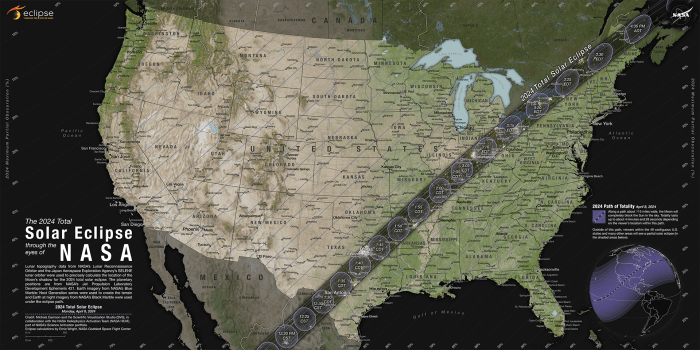Look up your solar eclipse view by ZIP code using this cool NASA map
On Monday, April 8, 2024, a total solar eclipse will cross North America and all of Michigan will at least get to see a partial eclipse. On April 8, 2024, a total solar eclipse will pass across North America and all of Michigan will be able to see a partial eclipse. This will be the last visible in the Contiguous United States until 2044. The path of totality, which is the literal path where the Moon completely covers the Sun, will be about 100 miles wide. The only place in Michigan located within the path of total eclipse is Luna Pier in Monroe County, which will only last 19 seconds. An interactive map by NASA allows users to map their zip code to see how much eclipse coverage there and what time the eclipse will be at its peak. However, even at 99% coverage, there is still enough sunlight to cause eye damage.

Published : one year ago by Kayla Clarke in Science
On Monday, April 8, 2024, a total solar eclipse will cross North America and all of Michigan will at least get to see a partial eclipse.
This is the last solar eclipse visible in the Contiguous United States until 2044. The path of totality is the literal path where people will be able to see the Moon completely cover the Sun. It’s about 100 miles wide.
The only place in Michigan located within the path of totality is Luna Pier in Monroe County. It’s right on the edge of the path of totality, so the total solar eclipse will only last 19 seconds there.
Places in the path of totality will see the sky become dark, as if it were dawn or dusk. People who only experience a partial solar eclipse will see the sky appear slightly darker than it was before, depending on their location.
An interactive map put out by NASA lets people put in their zip code to see how much eclipse coverage they can expect there, and what time the eclipse will be at its peak.
Even at 99% coverage, there is still enough sunlight to hurt your eyes during an eclipse. So you’ll want to make sure you have eclipse glasses or another form of eye safety. NASA has more information on eye safety online.
Topics: Space, NASA
